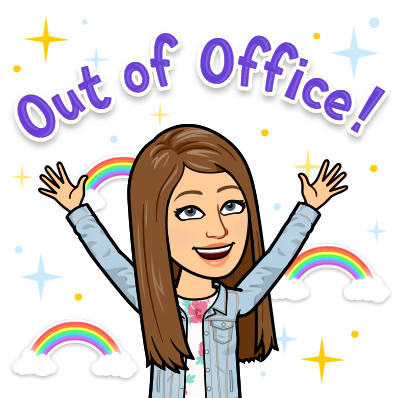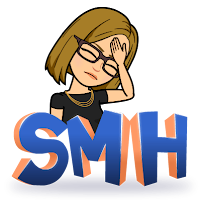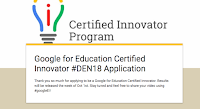Last Friday I was perusing Twitter, as I am wont to do, and I stumbled across an article from Singularity Hub. I had never heard of Singularity Hub before, so I went to their about page to learn more who they are. They wrote Since 2008, Singularity Hub has offered daily news coverage, feature articles, analysis, and insights on key breakthroughs and future trends in exponential technologies as well as highlighting how they’re being leveraged for social impact and utilized to tackle the world’s grand challenges. So... seems like something that's right up my alley! The article itself was focused on reimagining education in the exponential age. SH interviewed Rohan Roberts, the author of the book Cosmic Citizens and Moonshot Thinking: Education in an Age of Exponential Technologies.
Some highlights from the interview:
- Classifying the skills that machines should bring to the table and what humans should contribute to the partnership is key.
- Any curriculum worth its salt would focus not on content but on developing critical survival skills, such as leading by influence, agility and adaptability, initiative and entrepreneurship, effective communication, analyzing information, and curiosity and imagination.
- We’d need to focus on future fluencies that are based on problem solving, creativity, digital citizenship, media, and collaboration across networks.
- The days of the teacher as subject expert and fount of information are numbered. In addition to being cross-curricular specialists, teachers will need to be guides, counselors, mentors, and facilitators.
- If we acknowledge that human destiny is to become a multi-planetary species and that our future lies in the stars, then we’ve got to start training our students to have discussions about who we are, where we are headed, and what we want to be.
I found the article interested as it entwined my philosophy of education with some futuristic science! It also got me thinking... what skills did I learn in school that I still use today? My answer is very little. I grew up while education was still very much listen, memorize, regurgitate, forget. There are bits and pieces that I still remember from school, but nothing of real value that I still use today. So what skills are we teaching students that they are going to use when they're 34? I'm hoping that the answer includes some of the bullet points above.
In my classroom, students:
In my classroom, students:
- Choose different "occupations" each week: producer, director of photography, audio engineer, on-air talent, or editor. Students know what they need to do in these roles. This allows each student to lead, but also to follow. They have to communicate and collaborate together to ensure that a broadcast is developed every week.
- Are all pre-production writers in that they have to plan and write the script and design the corresponding camera shots. Students must be creative to engage their viewers, but they must also critically think about how their video will appear to others.
- Are sometimes absent, so a group must be capable and take initiative when that other student is missing. They know they have to "pick up the slack" because they have an upcoming deadline that doesn't budge.
- Learn about local and world news. My advanced broadcasting students are designing two stories for the broadcast - the first is about a local narrative and the second is a feature outside of the United States. Students will have to research, check sources, analyze information, and conduct interviews. They have to be flexible especially when preparing to do a phone interview with a complete stranger. I am hoping by exposing them to local and world news that they will think about who they are as a student, a member of the community, and a US and global citizen.
- Design a social commentary video. Students will pick a social topic important to them, provide commentary and information on the subject, and suggest solutions to solve these social issues.
I've realized in my (short) time in education that I am no longer the only person/thing that knows anything or everything about a topic. Students today have access to the internet, their classmates, and their own brain. I don't know "everything" anymore, so I knew that it was time for me to take a step back and have students take ownership of their own learning. My job, as a classroom facilitator, is to provide structure and a safe environment while also providing students with resources that will help guide their knowledge.
 My last thought on all of this is something that happened to me last weekend. My husband has been craving eggs benedict. I'm by no means a top chef, but I like to cook and work in the kitchen. So I went online, searched how to poach an egg, found a website tutorial from Alton Brown (who I know is a renowned chef), and learned how to poach an egg. I Snapchatted how everything went, and on my first go, I had one formed egg and one runny egg. Did it still taste delicious? Of course. And the next day, I tried it again, and I successfully poached two eggs for my avocado toast (#millennial). I realized that I learned how to do something new, with a facilitator, I tried and failed, but then I tried again.
My last thought on all of this is something that happened to me last weekend. My husband has been craving eggs benedict. I'm by no means a top chef, but I like to cook and work in the kitchen. So I went online, searched how to poach an egg, found a website tutorial from Alton Brown (who I know is a renowned chef), and learned how to poach an egg. I Snapchatted how everything went, and on my first go, I had one formed egg and one runny egg. Did it still taste delicious? Of course. And the next day, I tried it again, and I successfully poached two eggs for my avocado toast (#millennial). I realized that I learned how to do something new, with a facilitator, I tried and failed, but then I tried again.
So think about this... what are you still learning today? What do you want your students to learn as well? How can you reimagine education? Thanks for reading :) I'll see you next week!
- Rachel
My Teacherspayteachers website





